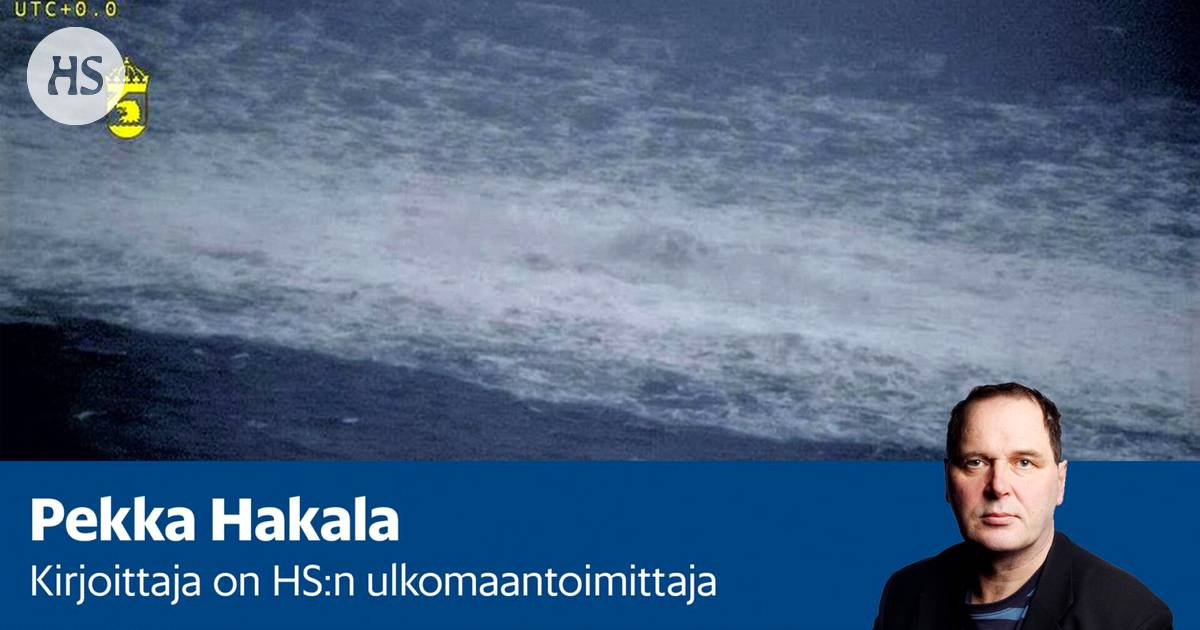Russia is burning gas to the winds and may have even destroyed the pipes because it wants to paralyze Europe regardless of the price, writes HS’s foreign correspondent Pekka Hakala.
gas On Monday, the pipelines that transported Russia to Germany at the bottom of the Baltic Sea were damaged in three places in apparent explosions, which are strongly suspected to be caused by Russia. Both gas pipes of the Nord Stream pipeline, which was commissioned in 2011, have been damaged, the other pipe of the Nord Stream 2 line, which was completed last year, is still intact.
Russia, whose state gas company Gazprom is the majority shareholder of the pipeline company, was strongly suspected of the pipeline explosions on Tuesday and Wednesday. Why would Russia blow up its own gas pipelines?
Let’s look for an answer in Virolahti first.
In the Gulf of Estonia The Russian border has been marveling at a new light phenomenon throughout the current summer. From the Portovaja compressor station, 12 kilometers from the border, there is an eternal flame that glows red at night. For more than three months, the compressor station supplying gas to the undersea Nord Stream I gas pipeline has been igniting natural gas pumped from the Yamal Peninsula in Siberia to Vyborg.
According to a British estimate, gas is burned for ten million dollars a day at current prices.
Read more: An estimated ten million euros worth of natural gas destined for Germany burns near the Finnish border every day – “It’s all part of the game”
Before this week’s pipeline explosions, Russian gas was flowing to Germany for only a tenth of the time before Russia’s invasion of Ukraine. At first, Germany tried to reduce the purchase of Russian gas. During the summer, the Russian state gas company Gazprom has reduced its deliveries citing technical problems. So is Russia forced to burn gas to the skies?
“It’s not,” says the professor of energy engineering at LUT University Esa Vakkilainen.
Natural gas according to Vakkilainen, it is not in any pressure cavity under the permafrost at all, but in the porous soil, into which new pipes are drilled at regular intervals, from which the gas is pumped into the pressurized network. If necessary, the field can therefore be closed either completely or partially, even if it does not happen quickly.
Another option is to store excess gas. Russia opened the new Portovaja LNG terminal a couple of weeks ago, and the first gas ship left the port for the Suez Canal on Monday. So there have been new gas tanks right next to the Portovaja compressor station.
Russia has burned its flame at the Finnish border with around 900 million euros for some reason other than technical or financial reasons. A signal fire has been lit in the port shed, telling the Germans that next winter it will be cold.
Explosions as a result, the gas contained in the undersea pipes leaks into the atmosphere. Professor Vakkilainen calculates its total value at today’s prices to be one billion, and even at pre-war prices, around one hundred million euros.
At the same time, pressure disappears from the undersea gas pipelines. Soon, seawater seeps into the pipes from the welding seams and rusting begins. The message to the Germans is blunt: you will never get gas from these pipes again.
The strategy is the same as when Russia bombs the population centers of Ukraine. Infrastructure is destroyed, civilians suffer and the connection to other war events is remote. US military scientists gave the strategy a name in the 1990s Shock and Awe, shock and horror. In the Finnish research literature, the term “shock landing” is used, because the purpose is to paralyze the opponent and take away his will to fight.
The idea is as old as mankind. The nuclear bombs dropped by the United States on Nagasaki and Hiroshima are a textbook example of the shock flavoring of modern history. Prussian military theorist Claus von Clausewitz attached to the strategy in his 1793 work Of warfare the elements “haze of war, strife and fear”.
Don’t wear it it’s enough, because Russia doesn’t justify blowing up its own pipeline. Social media is abuzz with doubts about the possible guilt of the United States. It remains unclear how the terrorist attack in the Baltic Sea will advance Washington’s goals in Europe. Or maybe it’s the enemies of the Kremlin who want to smear Russia – the Kremlin’s basic explanation then Anna Politkovskaya and Aleksandr Litvinenkon murders in 2006.
What about a fight? Gas still flows to Europe from Russia through Belarus and Ukraine along the old Veljeys pipeline. It is known that Gazprom has even paid agreed compensations to Ukraine for the use of the pipeline, despite the war. After all, we can read the message: live like Viktor Orbán and you lack nothing.
Moscow is preparing with regional alliances and movement support to freeze the fighting situation in Ukraine at least until next winter. At the start of the spring offensive, it would suit it that a quarrelsome Europe would have already thrown the gloves on the counter.
The ruble is not counted when the empire regains its power. And nothing prevents Russia from pushing gas into the pipeline, even if it is cut.
Correction 29.9. 11:50 a.m.: Corrected the name of the Veljeys gas pipeline. The name Ystvays belongs to an oil pipeline built during the Soviet era.
